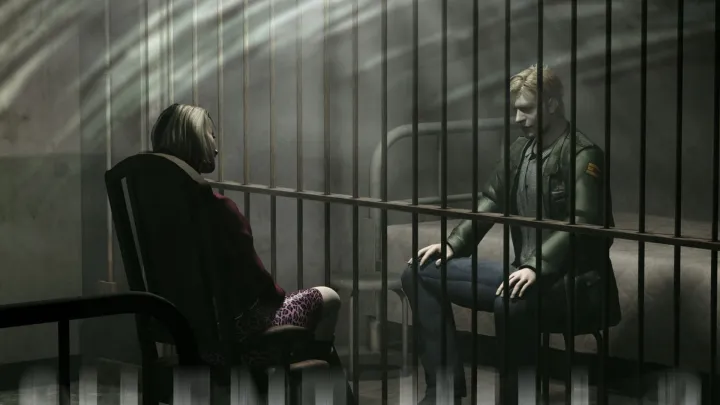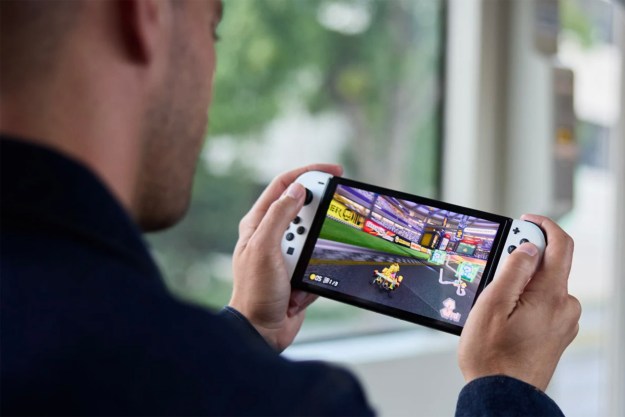After years of begging, Silent Hill fans are finally getting everything they’ve ever dreamed of … sort of.
Konami recently hosted a Silent Hill-themed livestream that showed the company is serious about reviving the long dormant IP. How serious? It’s currently working on a movie, three new games, and one massive remake. The last part of the list is the most intriguing, as Konami is giving beloved horror classic Silent Hill 2 a fully modern update with the help of Bloober Team, the studio behind The Medium.
With fans chomping at the bit for any scrap of news over the years, you’d expect the announcement to be the biggest story of the year. Instead, it’s been met with something of a mixed reaction. The remake in particular has spurred some debate, as some fans just aren’t confident that Bloober Team is the right studio for the job. That’s not by any fault of its own, though. Remaking Silent Hill 2 is something of an impossible task, because its messy PlayStation 2 DNA is exactly what makes the game so memorable.
Otherworldly jank
Silent Hill 2 tells the story of James Sunderland, a man in search of answers after receiving a letter from his wife — which is weird since she died three years earlier. She summons him to the town of Silent Hill in rural Maine, where it’s a little too foggy for comfort. James soon discovers that the town is overrun with monsters, including creepy nurses and the iconic Pyramid Head.
The narrative is unnerving enough on its own, especially thanks to the psychologically harrowing direction it takes in its later moments, but much of its horror comes from its atmosphere. To this day, there really isn’t a video game that feels as unsettling as Silent Hill 2 — and much of that can be chalked up to the limitations of the era. Take its signature fog, for instance. It isn’t a realistic white mist casting a semitransparent veil over the town. That nuance wasn’t entirely possible with the PS2, but it was to the game’s benefit.
The original Silent Hill 2’s fog is dark and thick, almost smoke-like in quality. It obscures everything in immediate sight, putting a haze over objects even two feet away. That allows the game to deliver more surprising scares, as creatures that could be easily avoided normally will suddenly appear out of nowhere. The fog itself feels like a monster in its own right — it will billow backwards when James approaches it as if it’s on the run. It’s not realistic, but that’s the appeal. The overly thick fog lends the game a claustrophobic aura, as it always feels like it’s about to squeeze in on James and suffocate him.

The game’s fog is so instrumental to its horror that any changes to it have resulted in controversy. When Konami gave the game an HD remaster in 2012, it loosened the fog up in the process. The changes might be subtle to the casual player, but the result was that the world became more visible, which made the effect feel more akin to a fog machine billowing on stage during a play. It feels silly to say, but fog will be a make or break aspect of the upcoming remake, as a realistic approach could further cut into the town’s mystique.
Fog is the primary example of where PS2 restrictions create opportunity, but you can see it in other technical aspects too. Enemies are especially creepy in the original Silent Hill 2 thanks to the limited animation potential of the time. Enemies like Nurses jitter and jerk around unnaturally as they move, their heads swiveling around as if they’re attached by a well oiled ball joint instead of a neck. When James kills one, they plummet to the ground in an instant, like a spirit that’s reanimated them has suddenly flown off and left a dead-weight husk in its place. Nothing moves in a way that makes you feel like it used to be a human being. Whatever you’re up against feels like it was pulled from another dimension, making it hard to ever truly predict movement patterns or behaviors.
Good bad acting
Those feelings translate to the game’s acting, which is perhaps its most fascinating aspect. Let’s be clear upfront: Silent Hill 2’s acting is bad. James in particular is a cardboard box of a man. During the game’s most dramatic moment, he emotionlessly mumbles with the energy of a single AAA battery. Other performances are on the other side of the spectrum entirely, with side characters like Eddie entirely overreacting like they’re auditioning for a ’90s educational video about the importance of staying away from drugs.
I don’t mean any of this in a negative way, though. In fact, the stilted performances are a large part of what makes the game so unsettling — even if that wasn’t the creators’ intent at the time. Much like enemy movements are just off enough to feel alien, the characters are just distant enough from real humans to be uncanny (the facial animations help in that regard too). That scene I mentioned where James barely reacts to the most distressing news of his life? It’s partially as uncomfortable as it is because you’re expecting him to have a loud, melodramatic breakdown. Instead, he speaks like a man under hypnosis, creating a genuinely haunting disconnect between the horror of the reveal and his flat reaction.

A lot of games get compared to the works of David Lynch for superficial reasons (“It’s so weird!”), but Silent Hill 2 is one of the few games that actually deserves that comparison. Lynch’s work tends to feel as surreal and otherworldly as it does in part due to his unique directing style, which pulls purposefully off-kilter performances out of very capable actors. Mulholland Drive is as disconcerting as it is because Naomi Watts’ Betty always feels just left of human, but just right of actor. It’s something that plays into some of Lynch’s big-picture idea about identity and the characters that struggle to find their own (see Dale Cooper in Twin Peaks: The Return).
It’s perhaps no surprise that that’s a core theme in Silent Hill 2 as well. From James coming to grips with the monster he really is, to the strange doppelganger dynamic between Maria and Mary, we never meet the real version of the game’s characters. Instead, we’re introduced to fragments of their shattered selves stuck in one big supernatural prison disguised as a rural town. The odd performances are an ever-present reminder to not take anything that unfolds in this world at face value.
Is that on purpose? Most assuredly not. The HD remaster features rerecorded voices that are a notably more traditional. Troy Baker voices James, making him more emotive and anguished — a change that turns the game into more of a straight melodrama. The bad acting in the original is more likely a byproduct of video game voice acting at a time when the industry wasn’t really invested in Hollywood-caliber storytelling. But the artists’ intent or the tech that drove decisions is irrelevant; those choices can take on a life of their own and define the work regardless.
That’s the story of Silent Hill 2, a brilliant PS2 game that creates horror out of mess. Its rough edges aren’t mistakes to be smoothed over by a modern remake; they’re an important part of its shape.
Editors' Recommendations
- Silent Hill 2 remake: release date window, trailers, gameplay, and more
- The Ayaneo Next Lite doesn’t actually feature SteamOS after all
- Resident Evil 4 shows that a remake doesn’t need to be completely faithful
- Dead Space 2 doesn’t need a remake. It’s already perfect
- Silent Hill 2 is getting a remake and it’s a PS5 console exclusive




